
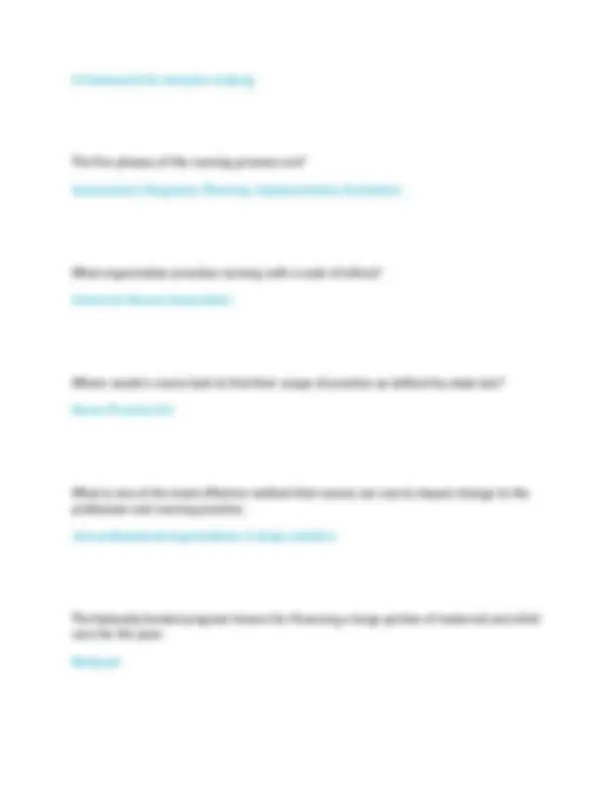
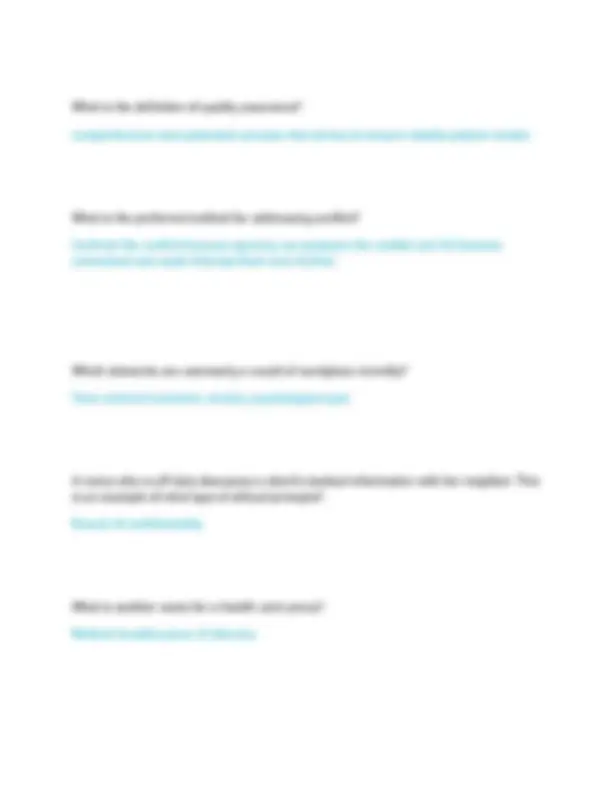
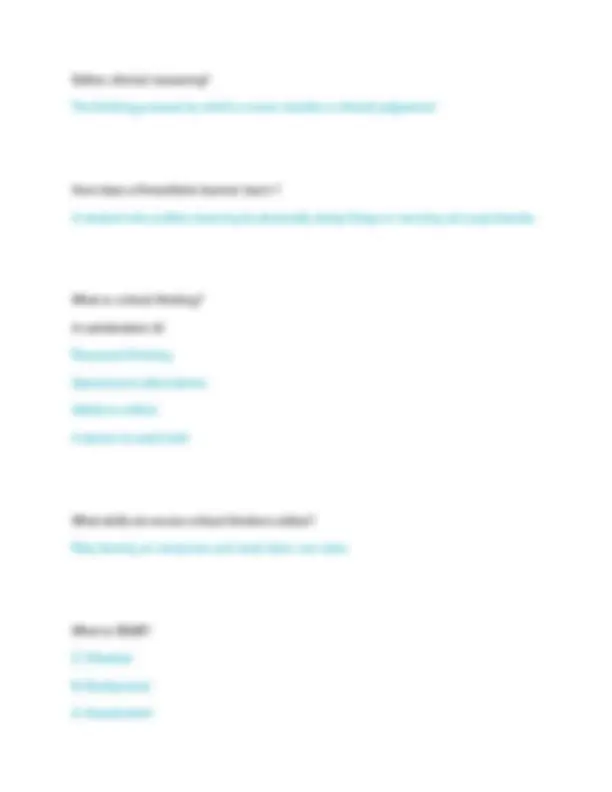

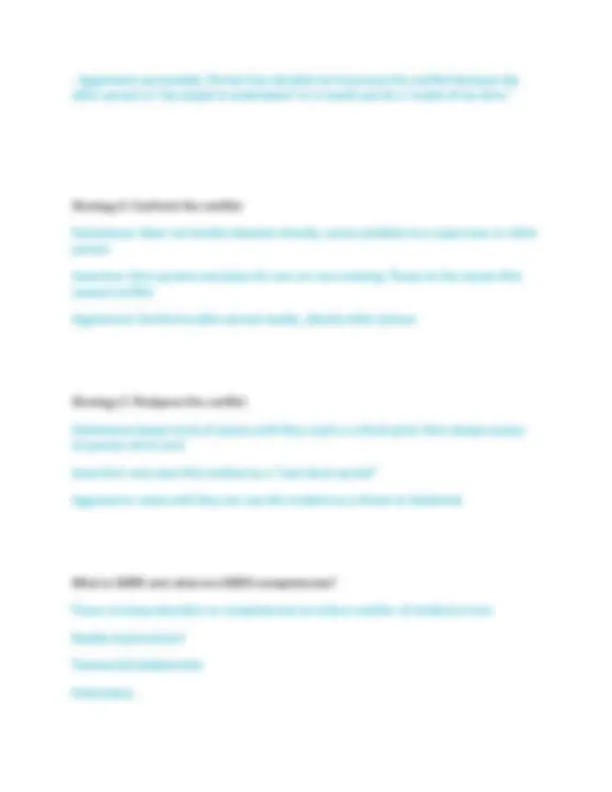


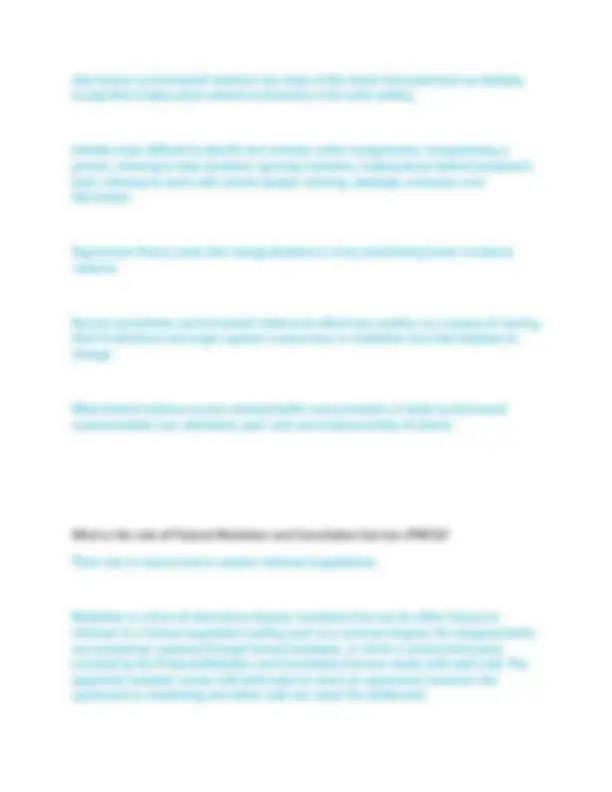
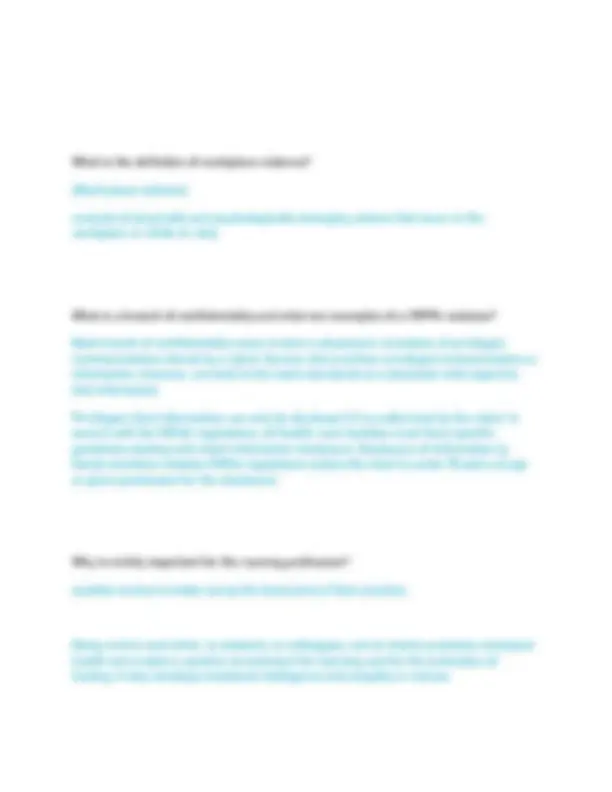
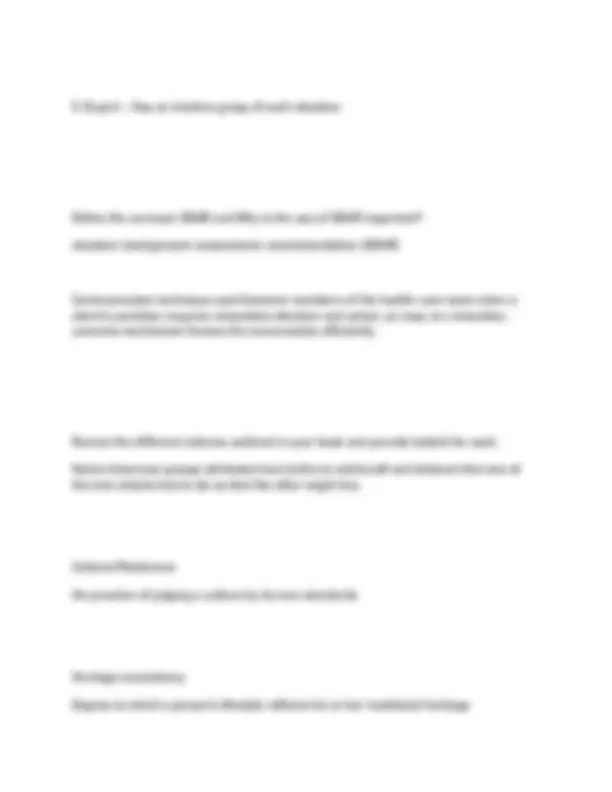
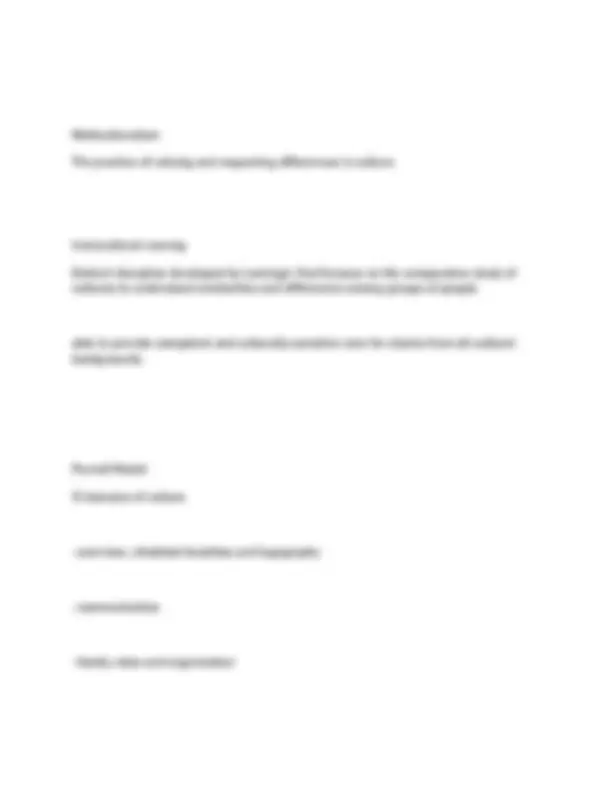
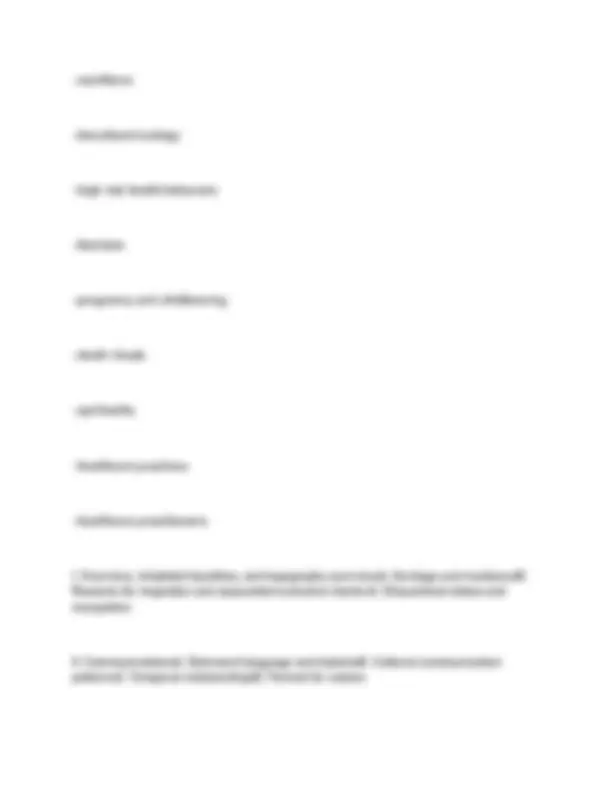
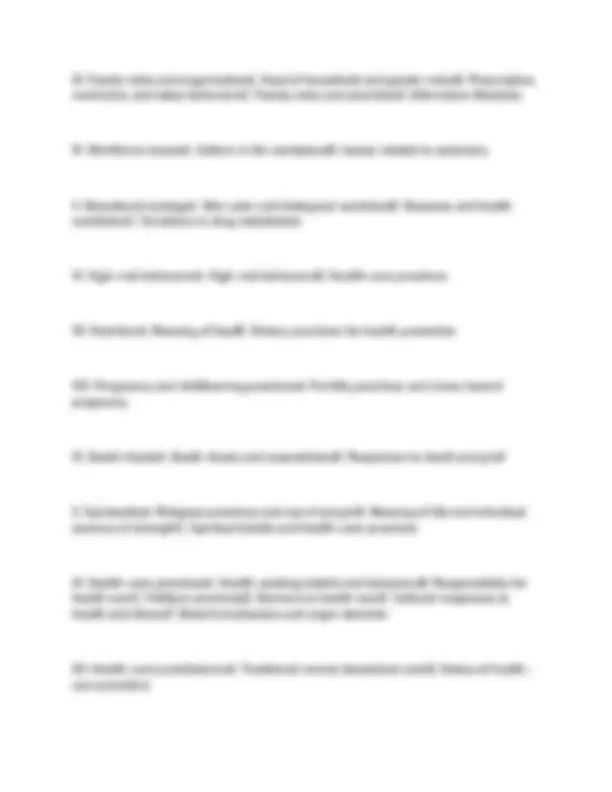
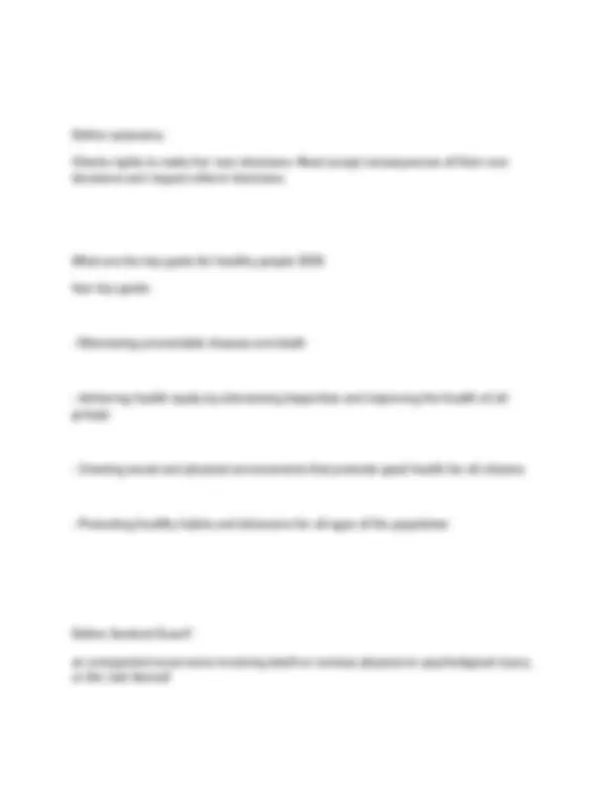
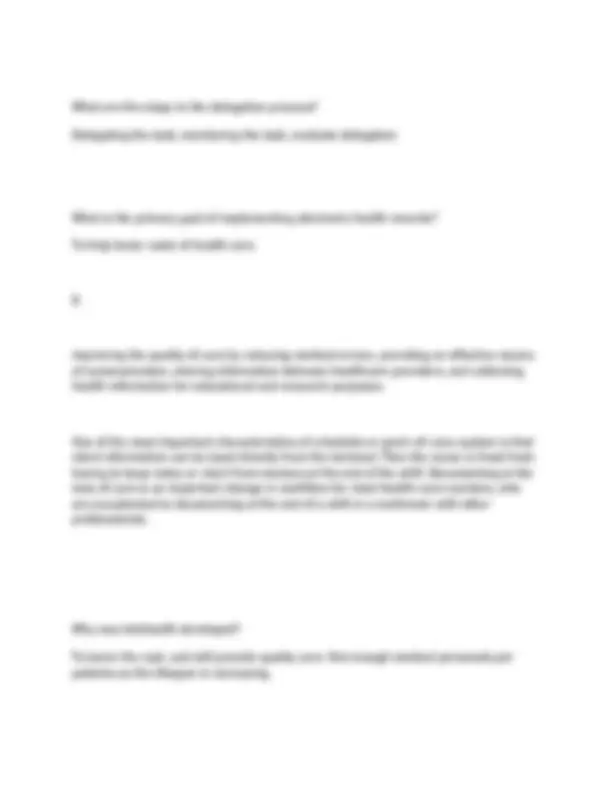
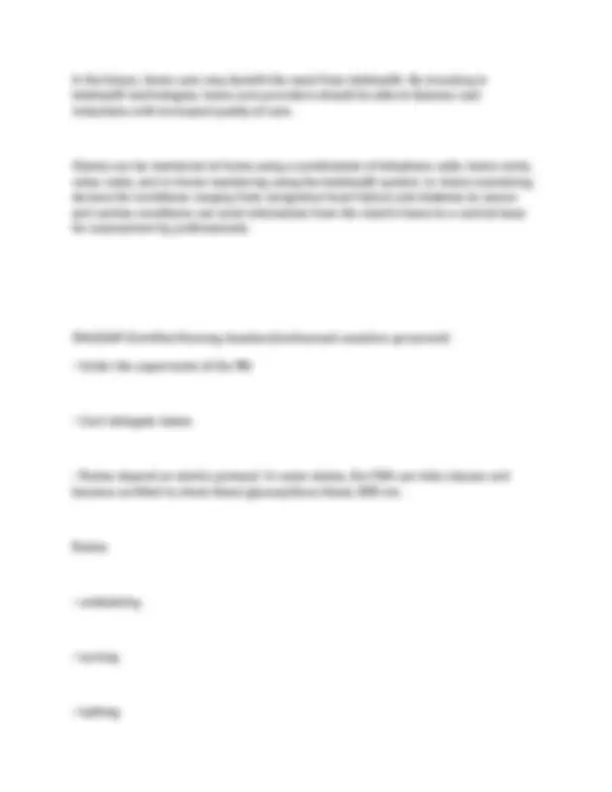
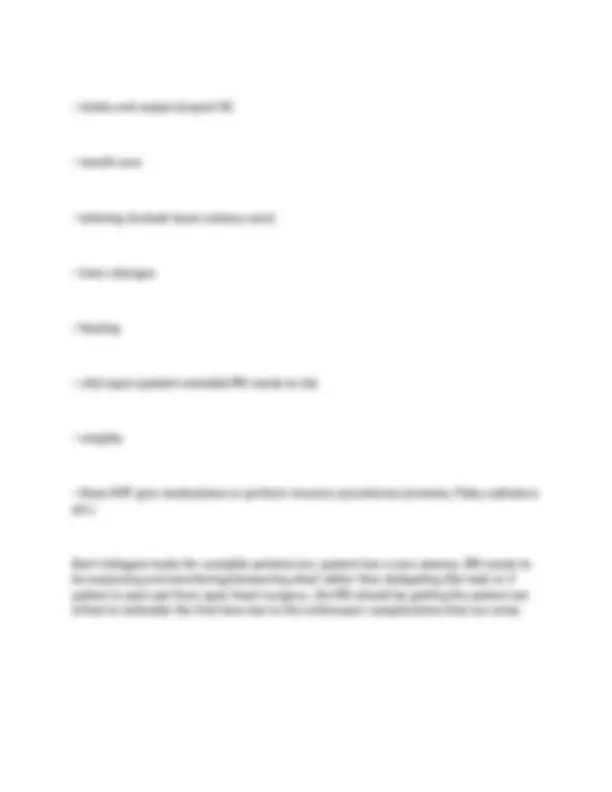
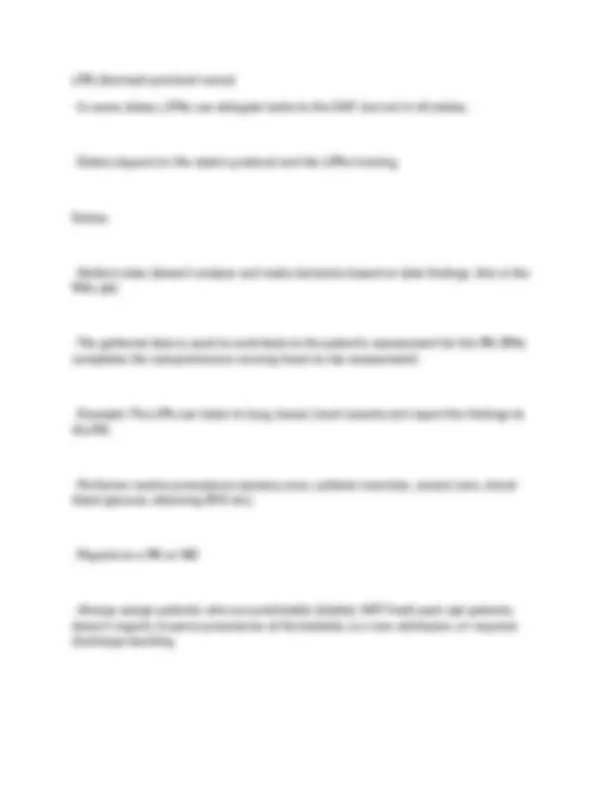
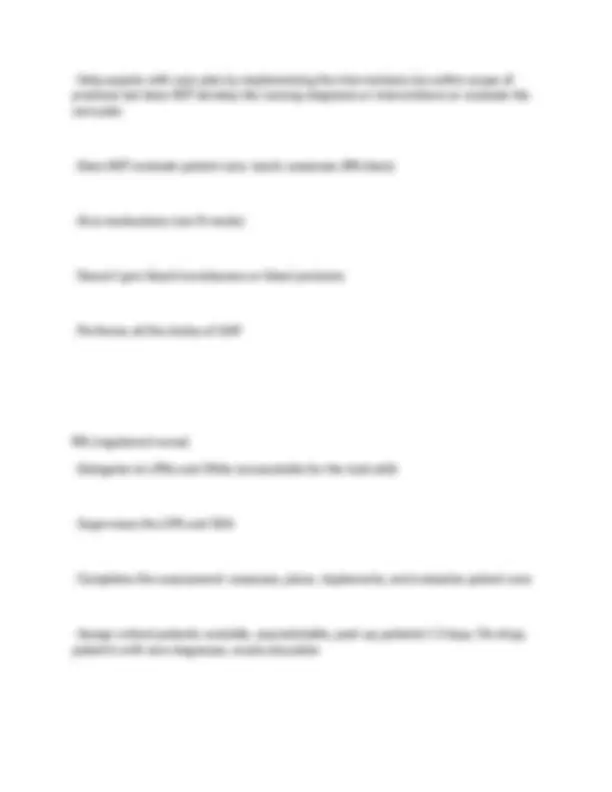
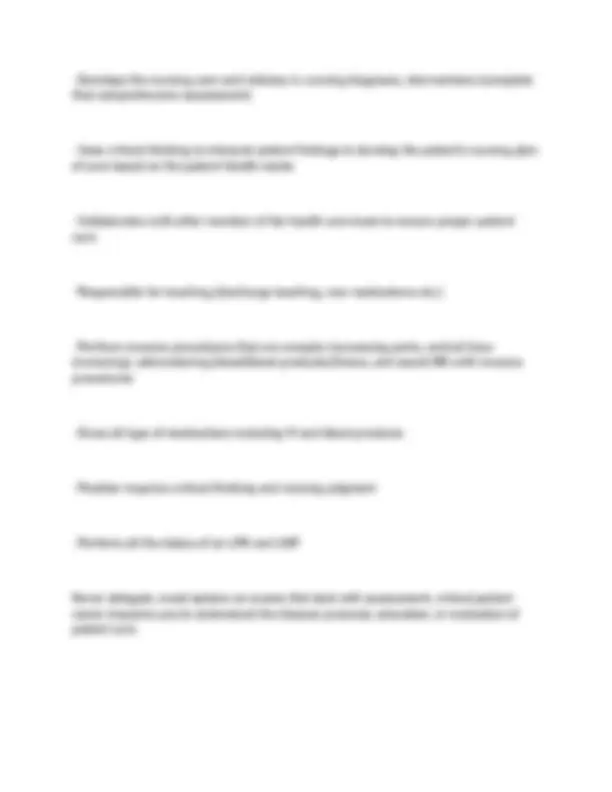
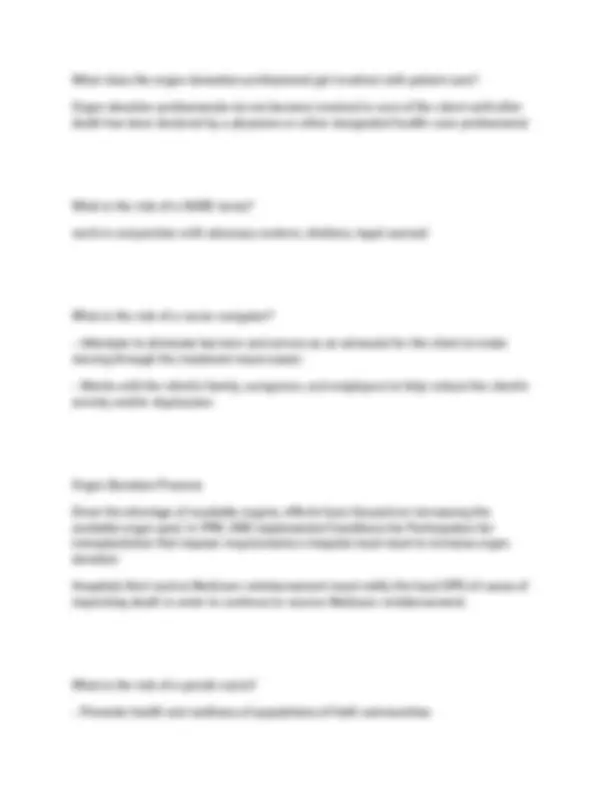
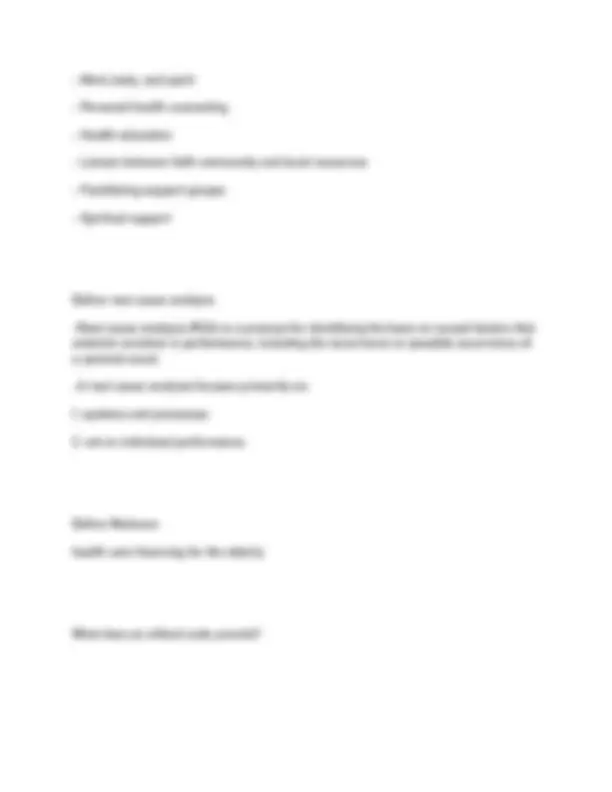
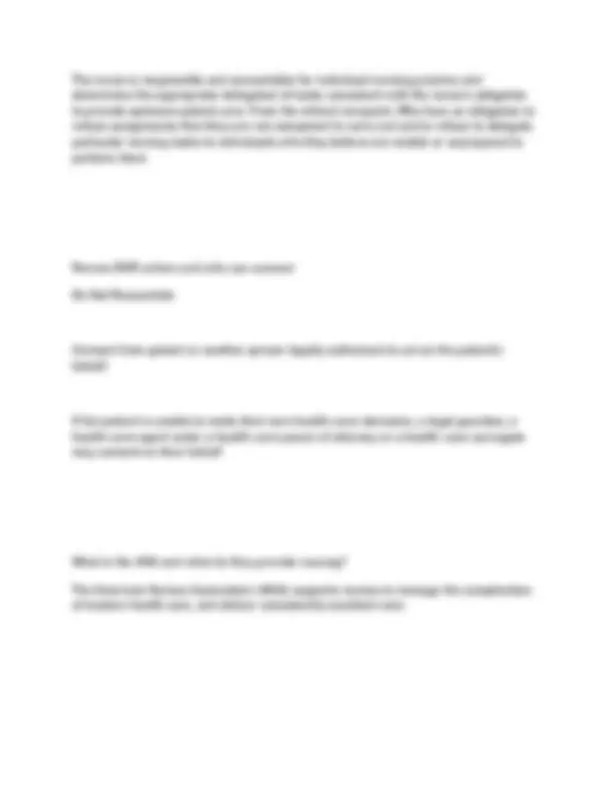
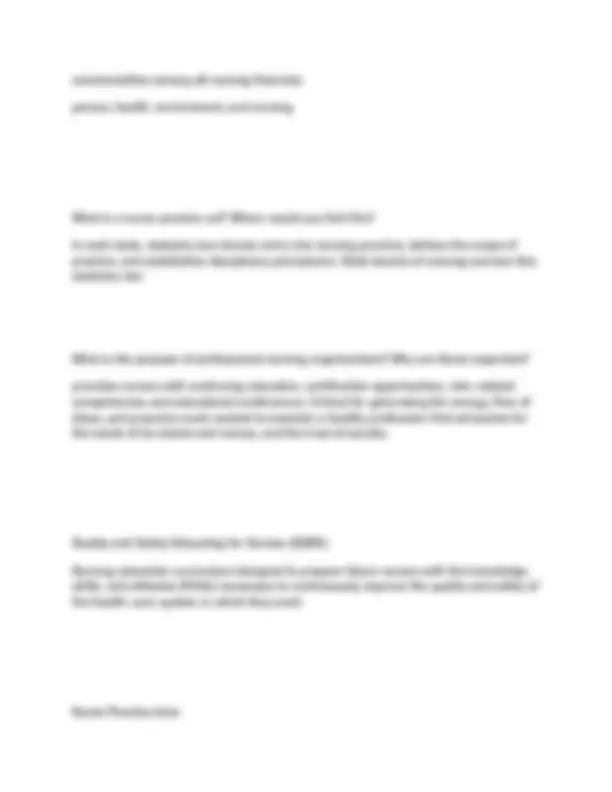
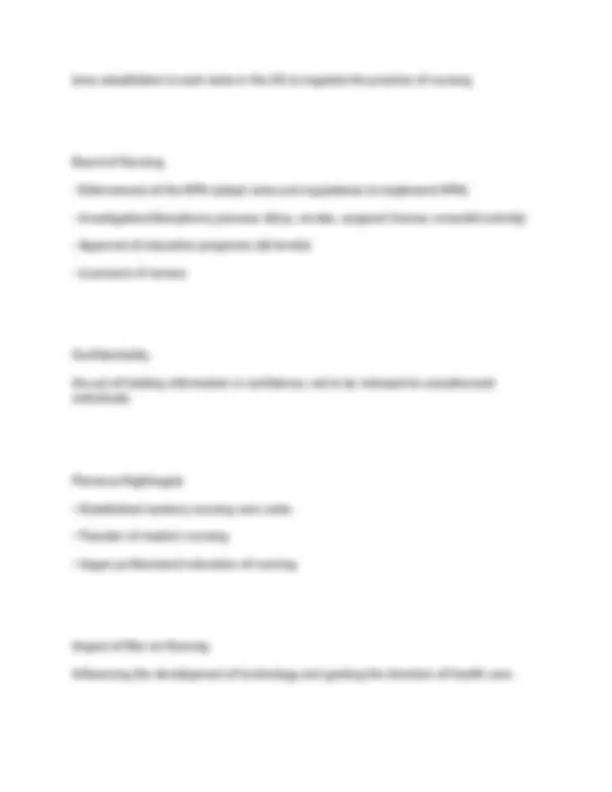
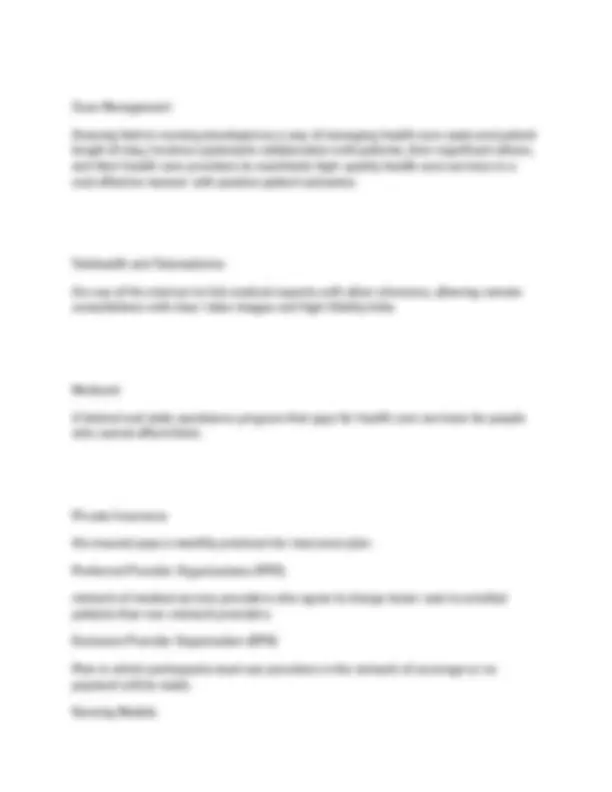
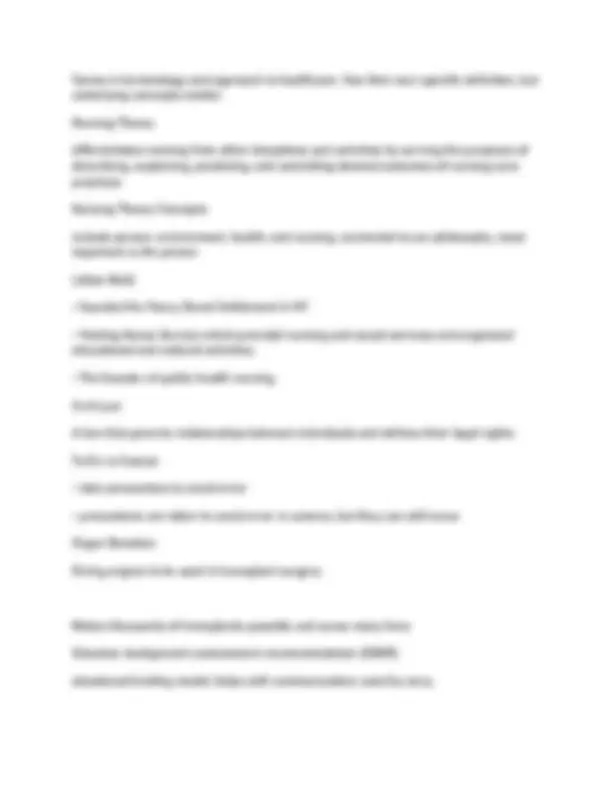
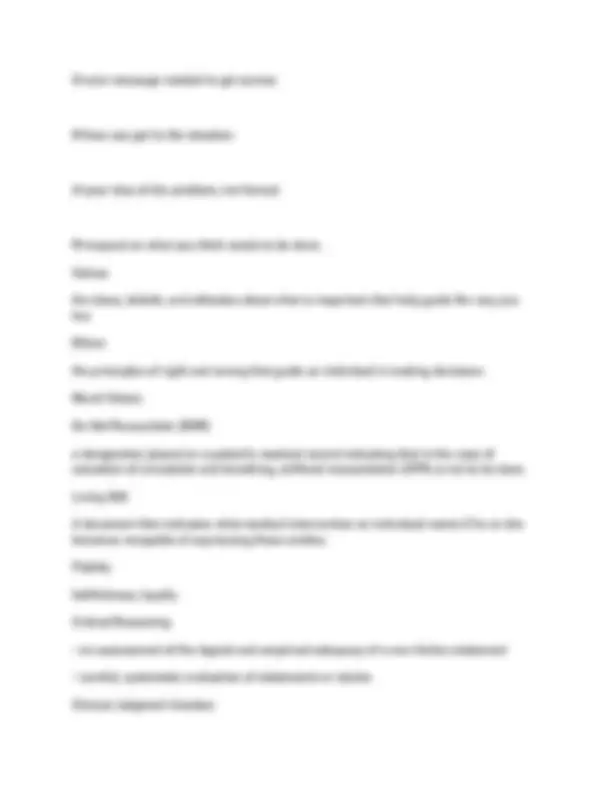
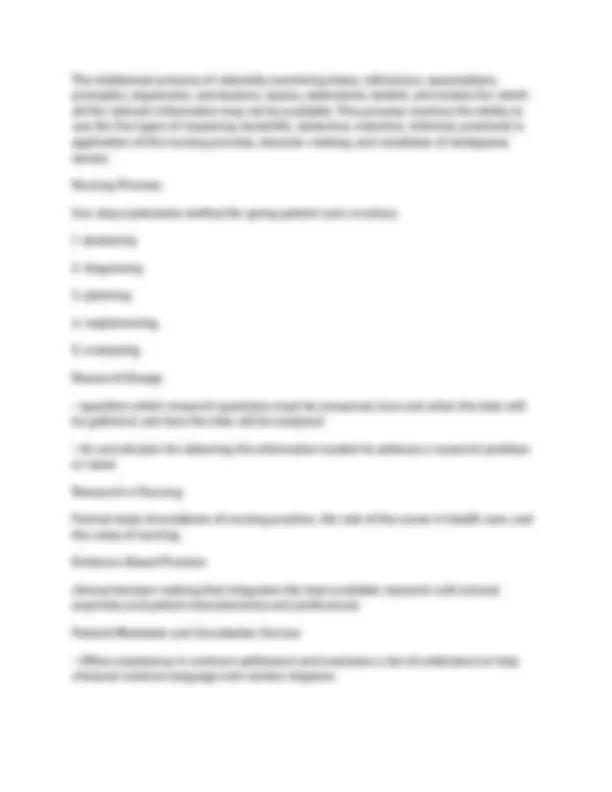
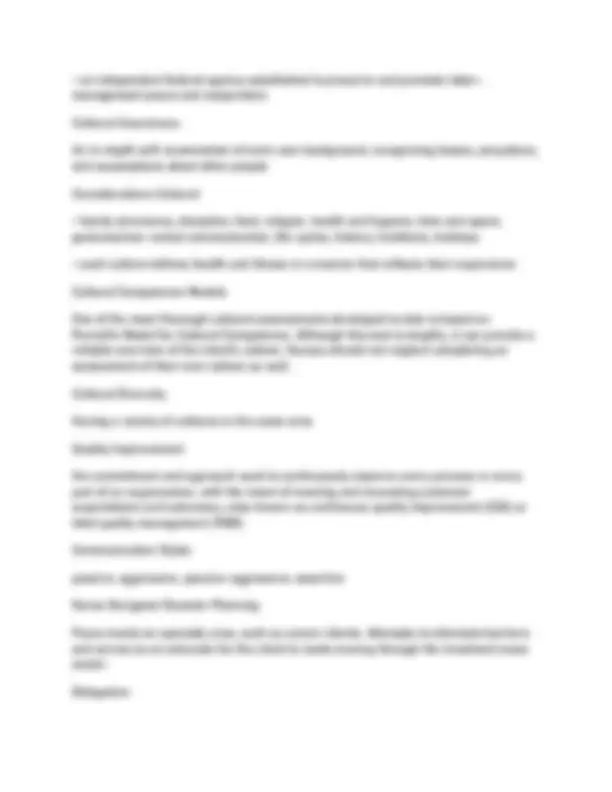
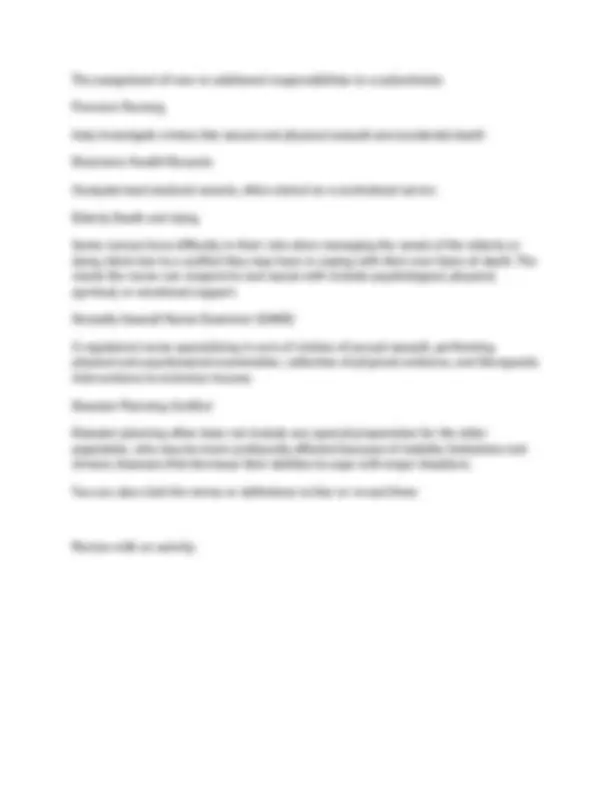


Study with the several resources on Docsity

Earn points by helping other students or get them with a premium plan


Prepare for your exams
Study with the several resources on Docsity

Earn points to download
Earn points by helping other students or get them with a premium plan
Community
Ask the community for help and clear up your study doubts
Discover the best universities in your country according to Docsity users
Free resources
Download our free guides on studying techniques, anxiety management strategies, and thesis advice from Docsity tutors
A comprehensive set of review questions and elaborated answers for the nur2058 dimensions of nursing final exam. it covers key concepts in nursing ethics, cultural competency, quality assurance, delegation, and legal aspects of nursing practice. The questions delve into various nursing models, theories, and practical applications, making it a valuable resource for nursing students preparing for their final exam. The detailed answers offer insights into complex topics, enhancing understanding and retention of crucial information.
Typology: Exams
1 / 39

This page cannot be seen from the preview
Don't miss anything!
































Define client autonomy The clients' right to make healthcare choices even if the health care provider does not agree with the decision What model includes a lengthy assessment tool that provides a thorough overview of a client's culture? Purnell's model What is the single most obvious barrier to providing culturally competent care? Language What is a the definition of a sentinel event? An unexpected occurrence involving death or serious physical or psychological injury or the risk there of serious injury including loss of limbs or function
What is the first step in the delegation process? Determining the skill level of the person to whom the task is to be delegated When does the organ donation professional become involved in the care of the client? After death has been declared by a physician What is the primary goal of the nurse navigator? Elimination of the barriers to care to make moving through the treatment maze easier What is root cause analysis (RCA)? A root cause analysis is a retrospective investigation of an event that has already occurred which includes reviewing the sequence of events that led to the error. The information obtained in the analysis is used to design changes that will hopefully prevent future errors. What is the federally funded national health insurance program in the United States for people older than 65 years? Medicare What does an ethical code provide for nurses?
What is the definition of quality assurance? comprehensive and systematic process that strives to ensure reliable patient results What is the preferred method for addressing conflict? Confront the conflict because ignoring can postpone the conflict and it'll become unresolved and could infuriate them even further. Which elements are commonly a result of workplace incivility? Toxic work environment, anxiety, psychological pain A nurse who is off duty discusses a client's medical information with her neighbor. This is an example of what type of ethical principle? Breach of confidentiality What is another name for a health-care proxy? Medical durable power of attorney
Define clinical reasoning? The thinking process by which a nurse reaches a clinical judgement How does a Kinesthetic learner learn? A student who prefers learning by physically doing things or carrying out experiments. What is critical thinking? A combination of: Reasoned thinking Openness to alternatives Ability to reflect A desire to seek truth What skills do novice critical thinkers utilize? Rely heavily on resources and need clear-cut rules What is SBAR? S: Situation B: Background A: Assessment
Why is nursing theory important to your practice? Understanding nursing theory helps you to be a better nurse and provide better care for real patients What is case management? It is the ongoing review of clinical care to ensure the necessity and effectiveness of the services being provided to the patient. It is conducted concurrently with the patient's stay and and following clients through various phases of care after discharge What is the difference between a theory and model? A nursing theory refers to a statement involving some element of reality that has not been proven and a model is a representation of something that exists in reality What is a research design? The critical link necessary to connect the researcher's framework with the appropriate type of data collection? Why is disaster planning difficult for the elderly population? They have more mobility and chronic disease issues
Why is evidenced-based practice important to nursing practice? Nursing care is based on scientific research and proven evidence What is the primary role of the Federal Mediation and Conciliation Service? Bring both sides together to work out a settlement What is an example of covert lateral violence? Making faces behind their back Strategy 1: ignore the conflict
What is the lOM? IOM position on adverse events? IOM = Institute Of Medicine To Err Is Human: Building a Safer Health System, it estimated that 98,000 people die per year due to adverse events and medical errors in hospitals. The report focused on faulty systems, processes, and conditions that led to mistakes. It recommended system changes for advocated strategies to reduce the number of errors and improve the quality of health care. The report recommended a four-tiered approach:
it helps to identify the focus, means, and goals of practice- they enhance communication and accountability for patient care What is the difference between a nursing theory and nursing model? Theories help guide research- explain, predict, control: health, stress, adaptation and other concepts. Models are more loosely structured than theories. Broad: examples nursing, person, health, environment. What is case management and why is the role important? Case management is the glue that holds health-care services together across practitioners, agencies, funding sources, locations, and time. Role importance: Nurses are uniquely prepared by their education and professional experiences to fulfill the role of case manager. The holistic health-care approach has been an underlying principle of nursing care since the time of Florence Nightingale. Nurses have experience in arranging referrals, providing client education, and acting as a liaison between physicians and specialty care. Any client who may face challenges regarding care and recovery can benefit from case management. Included are hospitalized clients, those with complex medical conditions, those requiring specialty care, and those who have personal or psychological circumstances that may interfere with recovery. Factors that indicate the need for a nurse case manager include:
How are values defined? Judgment of worth, quality, or desirability based on attitude formed from need or experience; a strong belief held by individuals about something important to them. values clarification Process by which individuals list and prioritize the values they hold most important. Why is disaster planning difficult? Often in disaster situations, nurses function outside their usual practice setting and may assume a variety of roles in meeting the needs of the disaster victims. Nurses must be able to perform under stressful and sometimes physically dangerous conditions. Why is EBP important in nursing practice? Delivers the highest quality of care for the best patient outcomes What is covert lateral violence?
also known as horizontal violence, has many of the same characteristics as bullying except that it takes place almost exclusively in the work setting. Initially more difficult to identify and includes unfair assignments, marginalizing a person, refusing to help someone, ignoring someone, making faces behind someone's back, refusing to work with certain people, whining, sabotage, exclusion, and fabrication. Oppression theory notes that marginalization is a key contributing factor to lateral violence. Nurses sometimes use horizontal violence to attack one another as a means of venting their frustrations and anger against a supervisor or institution they feel helpless to change. When lateral violence occurs among health-care providers, it leads to decreased communication and, ultimately, poor care and reduced safety of clients. What is the role of Federal Mediation and Conciliation Service (FMCS)? Their role is neutral and to resolve informal negotiations. Mediation is a form of alternative dispute resolution that can be either formal or informal. In a formal negotiation setting such as a contract dispute, the disagreements are sometimes resolved through formal mediation, in which a neutral third party provided by the Federal Mediation and Conciliation Service meets with each side. The appointed mediator works with both sides to reach an agreement; however, the agreement is nonbinding and either side can reject the settlement.
Emotional intelligence, which is the ability to be aware of feelings and thoughts of others by using behavioral cues, promotes the nurse's personal growth. It also transforms negative actions and attitudes into positive responses to health-care issues and is considered critical to the foundation of nursing practice. Define medical durable power of attorney and health care proxy designates another person to make health-care decisions for a person if the client becomes incompetent or unable to make such decisions. What is clinical reasoning? the thinking process by which a nurse reaches a clinical judgement What are the steps of the nursing process? ADPIE A=assessment D=diagnosis P=planning I=implementation E=evaluation Define critical thinking thinking that does not blindly accept arguments and conclusions. Rather, it examines assumptions, discerns hidden values, evaluates evidence, and assesses conclusions.
What are the five main steps in developing critical thinking?
Multiculturalism The practice of valuing and respecting differences in culture. transcultural nursing Distinct discipline developed by Leininger that focuses on the comparative study of cultures to understand similarities and differences among groups of people. able to provide competent and culturally sensitive care for clients from all cultural backgrounds. Purnell Model 12 domains of culture